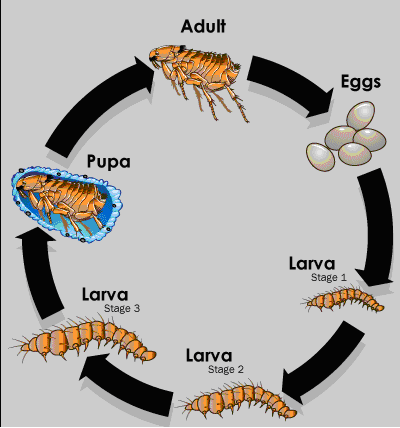Tapeworms
Dipylidium Caninum
The tapeworm, despite its name – Caninum, in other words dog, infects both dogs and cats. The worm is very prevalent among dogs and cats because its lifecycle involves fleas. Since fleas are very common in our country, so is the tapeworm.
The tapeworm can reach a length of 45 cm. It is made up of segments called proglottids. The tapeworm releases a segment each time in the feces.
Lifecycle:
There are eggs in the segment secreted in the feces or from the anus area. Eggs are released when the segment is destroyed. In the environment, flea larvae swallow the tapeworm eggs. The eggs hatch in the flea larva intestine. The infected flea larva develops into an adult flea. The adult flea climbs on the dog or cat. When the dog or cat clean themselves and lick their coat they inadvertently swallow the flea. The flea dies in the digestive system and the tapeworm releases itself from the flea and infects the dog or the cat.

Clinical Signs:
In most cases the tapeworm will not cause clinical signs in dogs and cats unless there is a very large quantity of tapeworms in the intestine, and then there will be diarrhea.
Due to the fact that the tapeworm releases segments in the intestine, the owners can see the tapeworm in the feces. In the event of high infestation, you can see segments coming out of the anus. In areas where animals stay you can see what looks like small dried rice grains.
As indicated above, the fleas are the bearers of the tapeworms which is why anti-flea treatment is so important.

Revolutionary Flea & Tick Control
Solano's Fleas & Tick control product line is the most effective, innovative and safe for your pet, your family and the environment.
